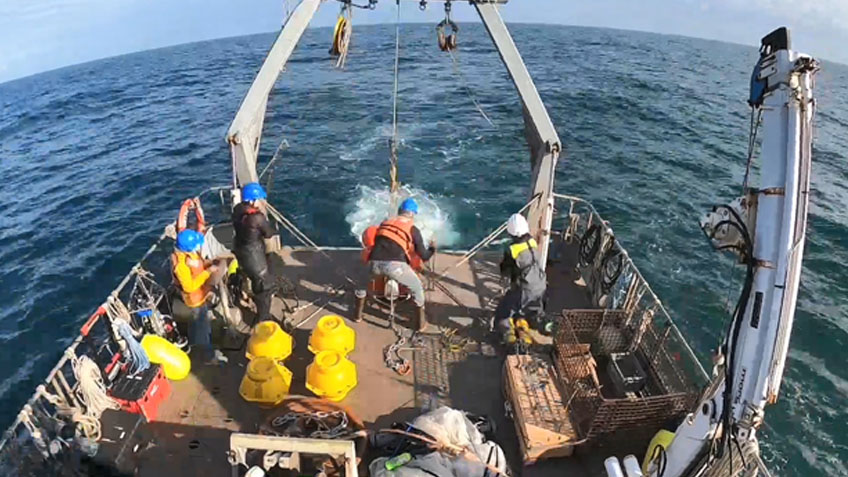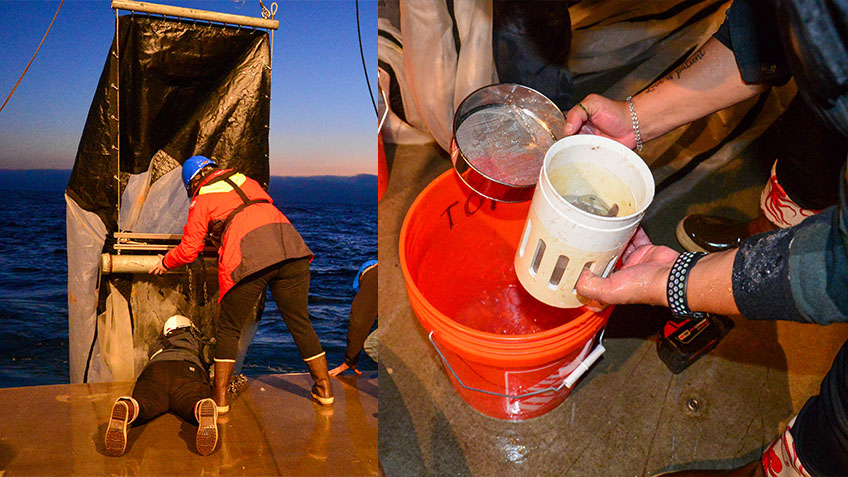The features below will help you to understand the goals and objectives of the expedition and provide additional context and information about the places being explored and the science, tools, and technologies being used.
Anatomy of a Seaglider
Seagliders are autonomous underwater vehicles (AUVs) that dive to 1,000 meters (3,280 feet) under the water. All Seagliders are equipped with sensors that measure the temperature and salinity in the ocean and some have additional sensors that record chlorophyll, currents, sound, radiation, etc.
Recovering a Seaglider
Whenever ocean scientists put a vehicle or instrument into the water, there is always a slim chance that their equipment will not return to the surface in the same condition they deployed it in. Consequently, recovery of ocean science equipment is always an exciting, yet nerve-wracking, experience.
Exploring From Shore
Much of what we know about the ocean today comes from expeditions that rely on ships to collect data. However, this approach is constrained by many factors which impacts our ability to collect critical data about these important ecosystems. In response, researchers are using creative technologies to enable more efficient exploration methods.
Sending the Power of Sound to the Seafloor
Bioacoustics are a powerful tool to study the marine environment. Echosounders allow researchers to use sound to collect data on the biological activity in the water column.
Live! From the Field: A Successful Start
Early this morning, the expedition team greeted the foggy Olympic Coast while they prepared for their first day at sea. After all this preparation, a buzz of excitement was in the air.
Expedition Plan
From August 27 to September 15, 2021, a team from the University of Washington Applied Physics Lab will carry out an expedition to collect data for developing new acoustics-based methodologies using gliders.







